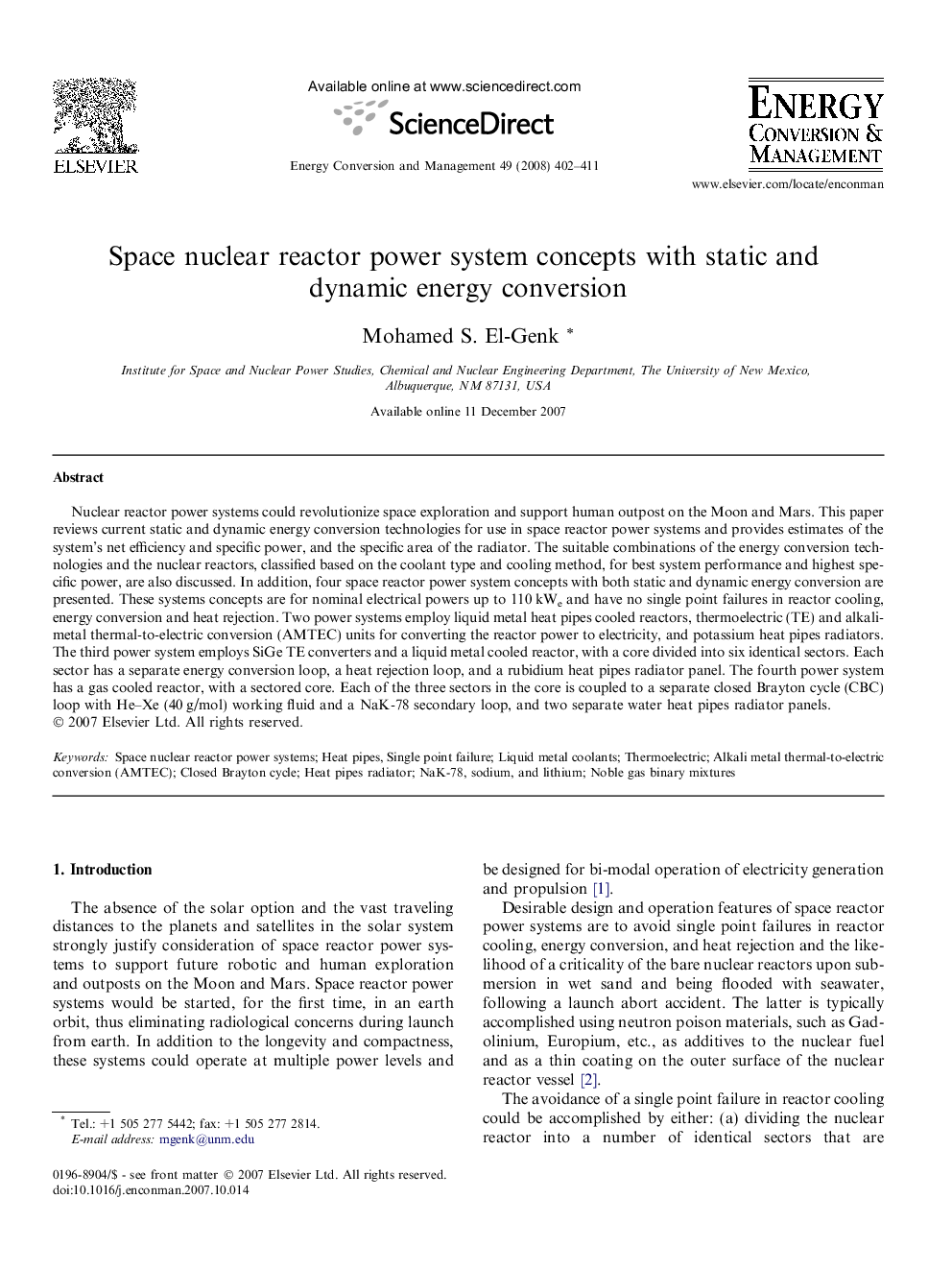| Article ID | Journal | Published Year | Pages | File Type |
|---|---|---|---|---|
| 772871 | Energy Conversion and Management | 2008 | 10 Pages |
Nuclear reactor power systems could revolutionize space exploration and support human outpost on the Moon and Mars. This paper reviews current static and dynamic energy conversion technologies for use in space reactor power systems and provides estimates of the system’s net efficiency and specific power, and the specific area of the radiator. The suitable combinations of the energy conversion technologies and the nuclear reactors, classified based on the coolant type and cooling method, for best system performance and highest specific power, are also discussed. In addition, four space reactor power system concepts with both static and dynamic energy conversion are presented. These systems concepts are for nominal electrical powers up to 110 kWe and have no single point failures in reactor cooling, energy conversion and heat rejection. Two power systems employ liquid metal heat pipes cooled reactors, thermoelectric (TE) and alkali-metal thermal-to-electric conversion (AMTEC) units for converting the reactor power to electricity, and potassium heat pipes radiators. The third power system employs SiGe TE converters and a liquid metal cooled reactor, with a core divided into six identical sectors. Each sector has a separate energy conversion loop, a heat rejection loop, and a rubidium heat pipes radiator panel. The fourth power system has a gas cooled reactor, with a sectored core. Each of the three sectors in the core is coupled to a separate closed Brayton cycle (CBC) loop with He–Xe (40 g/mol) working fluid and a NaK-78 secondary loop, and two separate water heat pipes radiator panels.
